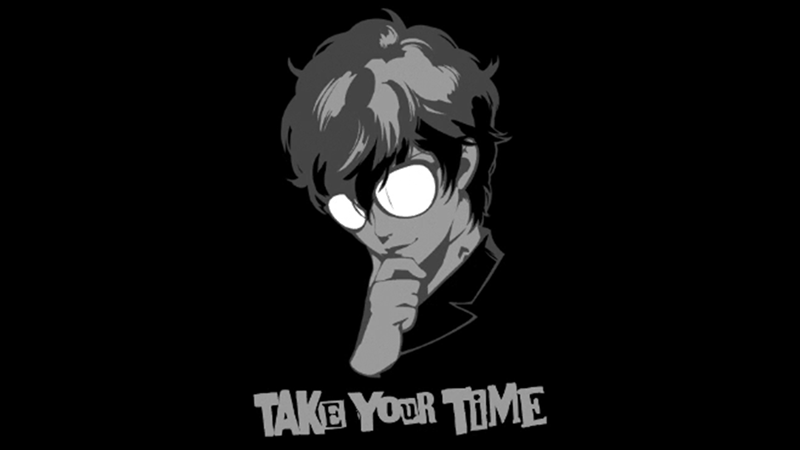 When you boot up any video game one of the first things you will most likely see is a loading screen of some sort. They come in various shapes and forms such as screens that display helpful tips or having some quirky interactive element to kill time. One of Persona 5's loading screens is a simple portrait of the protagonist with the words "Take Your Time" below. It's the only loading screen I can think of that shows a central motif of a game. The idea of "taking your time" permeates the entirety of Persona 5's experience from the way it methodically tells its story, to the way you slowly build relationships with characters, to the meticulous infiltration of Palaces. Of course, the sentiment extends to the game's turn-based combat as well.
When you boot up any video game one of the first things you will most likely see is a loading screen of some sort. They come in various shapes and forms such as screens that display helpful tips or having some quirky interactive element to kill time. One of Persona 5's loading screens is a simple portrait of the protagonist with the words "Take Your Time" below. It's the only loading screen I can think of that shows a central motif of a game. The idea of "taking your time" permeates the entirety of Persona 5's experience from the way it methodically tells its story, to the way you slowly build relationships with characters, to the meticulous infiltration of Palaces. Of course, the sentiment extends to the game's turn-based combat as well.By definition a turn-based combat system in a well balanced game requires the player to carefully contemplate their decisions to achieve victory over their enemies. Turn-based combat systems were prevalent on home consoles up through the end of the PS2 generation. Big-name, AAA companies like Square Enix, Bandai Namco, Atlus, and many others put out game after game that utilized turn-based combat. Upon entering the HD era of gaming, however, there was a paradigm shift in how games were presented. Developers wanted to utilize the greatly enhanced graphics to provide players with more grandiose, cinematic experiences and the stop-go nature of turn-based combat limited that ability to do so. As a result the game industry started to see less and less turn-based combat games on home consoles from AAA developers. Instead, active time elements became more prevalent as developers sought systems to keep players more involved in battles and lessen the disconnect felt from definitive turns. As a result, true turn based combat systems found a new home on handheld systems where there is less emphasis on creating dazzling set pieces (although the Switch may change this notion in the future). Series such as Bravely Default found a solid foothold on the 3DS while the long-running Final Fantasy franchise turned full action RPG on home consoles with Final Fantasy XV. The only console games to have come out in recent years from a AAA developer that features a true turn-based combat system are Tokyo Mirage Session #FE, Paper Mario: Color Splash and now Persona 5. While TMS#FE and Paper Mario were fine games on their own rights the combat didn't have that console quality spark to it; the aspect that made them feel at home on a console rather than a handheld. Persona 5, on the other hand, does. It plants its foot firmly on the ground and declares loudly, "I am a turn-based RPG and I deserve to be on consoles." Something about Persona 5's combat gives it that cinematic quality that console games seek and what that something is is what I want to discuss in this piece.
